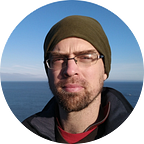Figma-tastic: Kate’s DDC story
One month ago Kate MacKay had just finished user research on a new charity website. This is her story of what happened next.
Kate is Fundraising Development Manager at Earthworks. Earthworks is a small charity offering social and therapeutic horticulture-based support to people with learning disabilities. Deloitte offered to help them pro-bono to build a new website through their 5 Million Futures programme.
A face-to-face design workshop
“It was helpful to talk about the design in person because it was more spontaneous and off the cuff than a Zoom call” — Kate
Brimming with insights from the research phase, Kate, Bianca (CEO at Earthworks) and the Deloitte team met in London for a 2 hour design workshop. Together they explored the new site’s potential architecture, exploring page layout and user journeys from the perspective of different site visitors.
As they talked, Deloitte’s lead designer iterated the design on a large screen, using Figma, a design software platform. This meant everyone could see the things they were talking about in real time, reducing hypothetical conversations and speeding up progress.
Time for branding too
“Earthworks has a lovely feel — its relaxed and inclusive.” — Kate
They also made time to look at the site’s branding. Although they had already outlined new content for the site, Earthworks didn’t have a brand written down. So they started drafting a tone of voice guide and made some logo changes. Again, the Deloitte lead captured this live during the workshop.
Figma fun for a full week
“Everything was in Figma — I love it! I really felt part of the collaboration process.” — Kate
For the next week the team worked more in Figma. As with user research Kate was an intimate part of the process. Every day she joined the Figma board to add comments or respond to questions about site design and architecture.
And every day the team continued their standups — short check-ins looking backwards and forward at the work being done. It was a rapid, intense process.
Development and more testing
Then, just as rapidly, the project moved on to the development phase. Kate was less involved in this as most of the work was technical: building the designs and connecting pages and elements together.
But halfway through the team began testing a prototype of the new site. Kate and 3 other people tested page navigation and functionality. Then the development lead used their insights from the testing to make further changes.
As before, this happened at speed, following a tight process.
Then, suddenly, the build was done and the site went live.
Looking back
“I know I can do a design process and not be nervous about it at all” — Kate
Kate recounts her story with obvious enjoyment. She describes how she now feels confident in her own understanding of design — because she’s been involved in a process from start to finish. She has also learnt how to play an important part in a team working at speed on a new project.
She also now has a new job with another charity where she will be able to take her new skills and experience to help them with their digital and design challenges.
See the new Earthworks site
You can check out the new Earthworks site.
